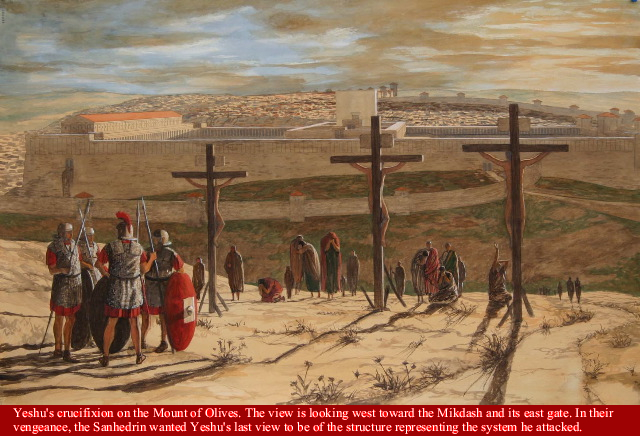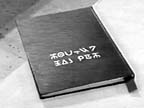Secrets of the Temple
The Twilight Zone of Reality – To Serve Man
Over forty years ago there was a Twilight Zone episode titled: “To Serve Man.” It is an eerie story about an alien race known as Kanamits. The alien beings travel to earth ostensibly to assist the human race in reaching a higher state of existence. The Kanamit exude an angel-like presence. Dressed in long, flowing, robes with a high, domed, head they seem beneficent, yet their sunken, sinister, eyes seem to belie a hidden agenda. When a Kanamit alien addresses the UN assembly telepathically, with honeyed words he promises the Kanamits come as friends.
During his address, the Kanamit representative notes how the earth is plagued by both natural and unnatural calamities and that they only wish to help resolve these problems. They offer a new power source, an end to famine, and a force field to be used as a defense shield. The Kanamit states, “We wish only that you simply trust us.” Departing the UN, the Kanamit leaves a slim book behind.
A cryptologist for the U.S. government is assigned to translate the book, which turns out to be a most difficult task. While discussing the difficulty of the translation with several army generals, his assistant rushes into the room with news that the title of the book has been deciphered. The title reads, “To Serve Man.”
As the story progresses, United Nations delegates are seen watching a film of several tests given to the Kanamit representative. These are essentially lie detector tests that prove the Kanamit are making truthful statements and the Kanamit repeats his motive of coming to earth only to offer help.
In time earth’s deserts became gardens, the armies are disbanded and the countries of the world offer their thanks for the Kanamit’s assistance. The Kanamits propose that the people of earth begin reciporical visits to their planet to see how the Kanamits achieve their wonders and before long people are standing in line to board Kanamit spaceships. Before boarding the Kanamit ships the human travelers are weighed and chat about the upcoming space voyage events as if embarking on a grand vacation.
The cryptologist and his assistant discuss recent events and note that there are no more codes to decipher, that nearly 2000 Kanamits are now on earth, and how easily man decides to go off to a strange planet. In fact, they are both on a waiting list to go. Although the cryptologist has long since given up on deciphering the book, his assistant states that she is still working on it and getting close to a translation.
Finally the cryptologist has his number called and begins boarding the spaceship, but as he is ascending the steps, his assistant rushes up and tries to push through the crowd while yelling desperately to get his attention. As the assistant is held back by the Kanamits she screams, “Don’t get on the ship! The book – To Serve Man – IT’S A COOKBOOK!”
This website is about a similar book that comes from ancient times. Like the Kanamit’s book, the Bible seemingly promises great things for mankind, but has a much different meaning when properly deciphered. Like the Kanamit’s book, the Old Testament is in fact a cookbook, a book of recipes explaining how to use criminal techniques to extract wealth and power from other peoples and nations.
The esoteric language in which the Bible is written effectively hides the true agenda of the book and like the people who board the spaceships embracing the Kanamit’s message without understanding the true motive, the Bible is embraced by people around the world as their salvation without properly decoding the meaning. Ironically those who most strongly profess their belief in this book and claim salvation from it, often know little or nothing of its history, nor anything of the people who wrote it.
This is the story not of the Kanamits, but of the kohanim; the Temple priests with long flowing robes who promised great things from their god, but only delivered misery and suffering via their bloody sacrificial system. The Conspiracy of Man is the story of Yeshu’s mission to bring down the kohanim (priests) onerously oppressive sacrificial system and their Mikdash (Temple).
Notes to the reader
The premise of this story is quite simple, but like other historical incidents, and Jewish historical incidents in particular, it is long and convoluted. One might say – the devil is in the details. Christian mythology holds that Jesus, Yeshu, popped out of nowhere to save mankind of his sins, but that is absurd. Yeshu was a man whose story is framed in a very real time and a place and it’s the background of that time and place that tells the real story. Far from being a deity who dropped by to save everyone of their sins, Yeshu was a man on a mission. A son of man literally bred for his mission. Like other notable men in history his story begins long before his birth. To understand this story one must relive those times and think like those people. One must understand their motivations, quite like the motivations of other historical figures. This story takes one into those times where people lived within the same physical constraints we know today. Magic and mysticism have at best a minimal place in history and the few who today have witnessed the type commonly claimed in the Bible are largely dismissed as delusional. Yeshu’s story has very little magic and mysticism. It is the story of a real man, in a real place, at a real time, addressing a very real problem.
Con•spir•a•cy
Date: 14th century
Pronunciation: \kən-ˈspir-ə-sē\
Function: noun
Inflected Form(s): plural con•spir•a•cies
Etymology: Middle English conspiracie, from Latin conspirare
1: the act of conspiring together 2 a: an agreement among conspirators b: a group of conspirators
Conspiring
Main Entry: con•spire
Pronunciation: \kən-ˈspī(-ə)r\
Function: verb
Inflected Form(s): con•spired; con•spir•ing
Etymology: Middle English, from Anglo-French conspirer, from Latin conspirare to be in harmony, conspire, from com- + spirare to breathe
Transitive verb: plot, contrive intransitive verb1 a: to join in a secret agreement to do an unlawful or wrongful act or an act which becomes unlawful as a result of the secret agreement b: scheme: to act in harmony toward a common end.
It is becoming increasingly difficult to find information about the ancient conspiracy due to tacit censorship and manipulation of the printed word and the unwillingness of the general population to consider as a possibility something, which they have been carefully programmed to believe, is outrageous and ridiculous. Yet conspiracies are typical throughout major historical events. Whenever and wherever there is a struggle for power, one finds conspiracies at work. Thus conspiracies are not the rare, odd or unusual reaction but the historical norm.
A note on Breeding
People have been bred throughout history to fill specific roles. Monarchies are the first that come to mind, but there others where people have been bred for far different purposes. Historically speaking, there is nothing out of the ordinary in a conspiracy of a long-term oppressed group breeding a champion to fulfill a role they cannot.
Chapter Descriptions
Chapter One – The Essene and the Kohanim, provides the reader with an overview of the times, place and situation that bought forth an Essene conspiracy to raise a kohein (priest) who would end the Mikdash’s iron-fisted domination over the Jewish people.
Chapter Two – The Hair weaver and the Kohein, begins the story with Mariam’s (Mary, mother of Jesus) role in the conspiracy.
Chapter Three – Yeshu, background of Yeshu’s family ties culminating with the birth of Yeshu
The purpose of this chapter is to acquaint the reader with the complexities of Jewish culture, especially the marriage contract. Yosef and Mariam are often depicted by Christians as having a sort of “shotgun wedding” to cover up the fact that Mariam was already pregnant and to make her an “honorable” woman. The first problem with this is that it presses the credulity of the times to think a Jewish man would volunteer to marry a woman pregnant with another man’s child or even god’s child. This would place Yosef far beyond sainthood in ancient Judea. But as chapter two points out, Yosef was in fact Yeshu’s father. The second problem is the law, Under Levirate law, adultery was adultery. Marital status had no effect on the pronouncement of adultery. A pregnant, unwed woman was by definition, an adulteress. Marriage would not change this status nor the punishment, which in this case meant death by stoning. When one understands the Jewish wedding process, it becomes obvious this was no quickie justice of the peace ceremony, but a carefully planned, elaborate, contractual arrangement as were all Jewish weddings. Marriage was also exclusively religious in nature as civil ceremonies of this nature did not exist.
Chapter Four – Lessons from the Torah
This chapter is a rewrite of the entire book of Genesis as it might have been told to Temple (Mikdash) initiates. These are the stories that set the precedence for the Temple’s sacrificial law. The Essene, although diametrically opposed to the Temple’s sacrificial system, nonetheless at times comprised some of its highest positions of authority, thus these Essene adepts were well educated on the intricacies of Temple law and custom. These critical concepts were taught to Yeshu and other initiates of the Essene brotherhood so they could deal with the byzantine minutiae of the sacrificial system. It was this privileged knowledge young Yeshu brought forth to astonish the Temple priests and scribes.
The story of Genesis begins in Egypt where an ancient king, revered as a god, establishes a mining operation in a distant land. The garden,named after the king, becomes known as Aten’s Garden or “the garden of Aten. En route to his garden paradise, Aten takes in two nomadic wanderers from the dust of the desert and forms them into productive members of his staff.
The chief Egyptian priest in his lust, soon conspires with the woman to steal the king’s most secret knowledge of the manipulation of people and their cultures, the knowledge of good and evil. Aten catches wind of the plan when he finds the man wearing an article of clothing that clearly indicates he knows about the secret knowledge. He then banishes his chief priest to the mines for the reminder of his days and banishes the two nomads from his garden. Along with the two nomads a cabal of Egyptian priests privy to this theft leave Egypt as well, lest they be implicated in their leader’s crime.
From this point on, Genesis is a largely metaphorical description of the interaction between the offspring of these two nomads and the renegade Egyptian priests who comprise the authority seeking to rule the lesser regions and their peoples using Aten’s secret knowledge. The remaining chapter segments explain these stories of “good and evil”; the ground rules outlining the methods and techniques for gaining power and controlling the the material wealth of others.

